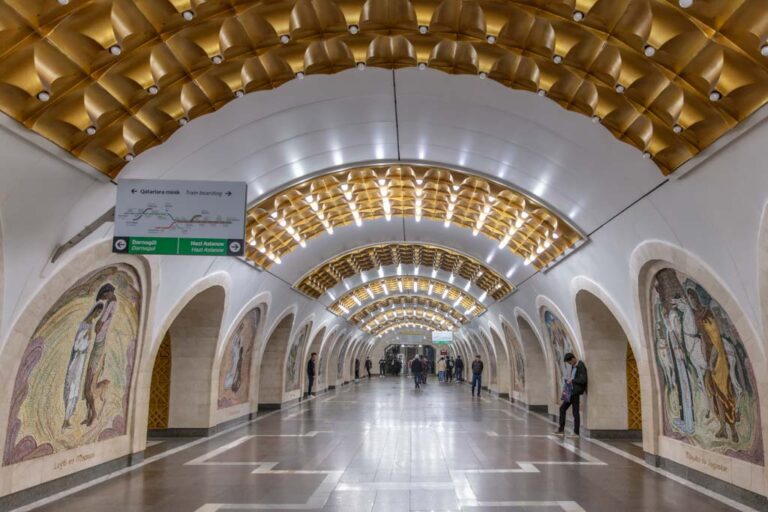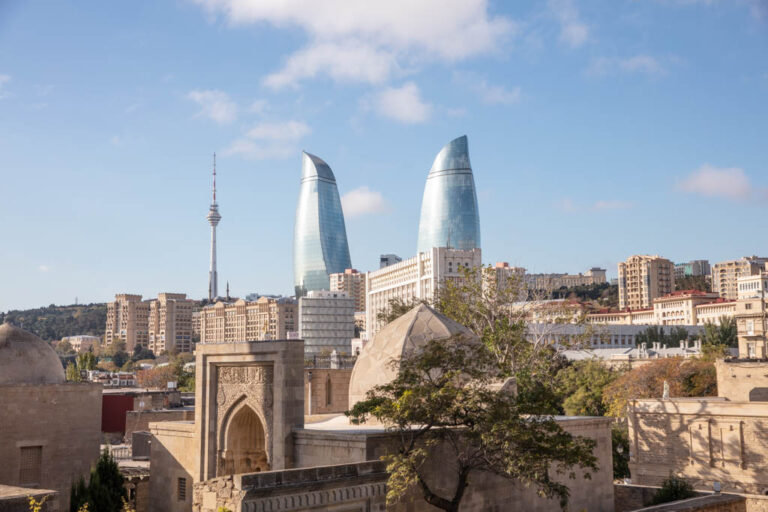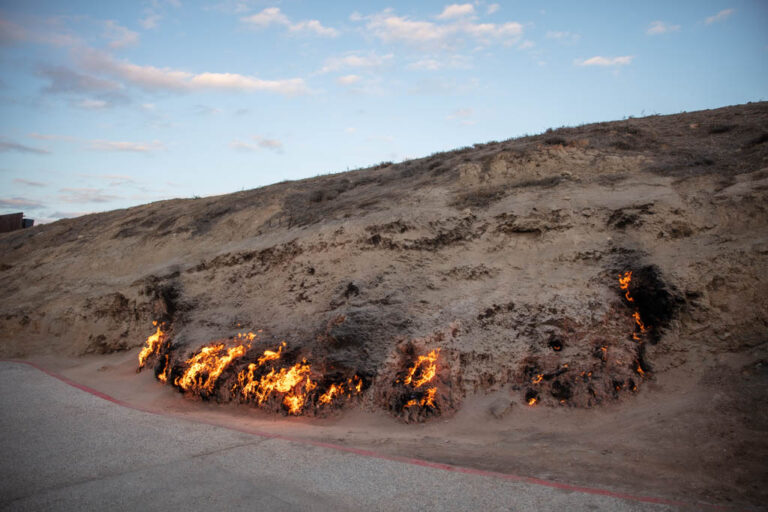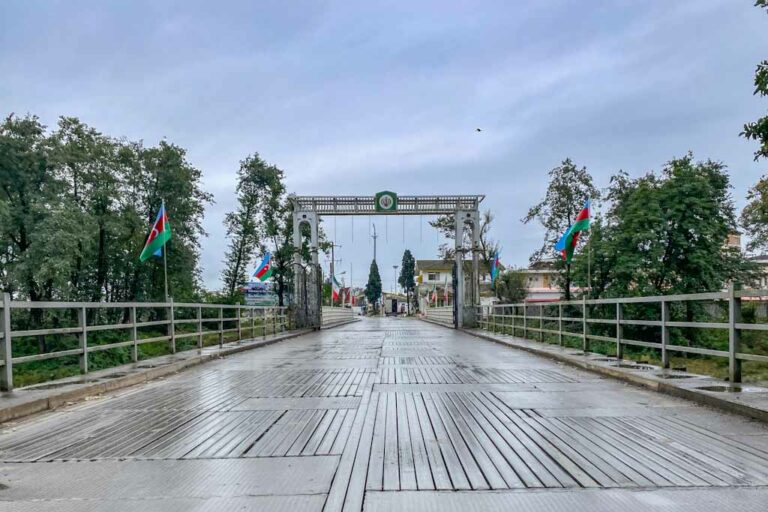A Guide to the Baku Metro: Underground Azerbaijan
Updated April 2024, A Guide to the Baku Metro: Underground Azerbaijan was originally published in March 2023
As most of you who have been reading my posts for a while know, I have a bit of an obsession with Soviet-era metro systems after seeing the posts about the Tashkent Metro, Tbilisi Metro, and Almaty Metro. So when I booked my tickets to Baku to kick off my first tour group I’d be taking to Iran, I naturally hatched a plan to visit all 26 Baku Metro stations.
Known locally as the Bakı metropoliteni, the Baku Metro officially opened on November 6, 1967, making it the fifth metro system of the former Soviet Union. As such, it features many of the details unique to ex-Soviet metro systems. This includes stunning mosaics, artwork, and sculptures that blend traditional Azerbaijani elements with Soviet ideology and extremely deep stations that could serve as shelters in the event of a much-feared nuclear attack during the Cold War era.
With the advent of what would become a booming oil industry in the Caspian Sea in the 1930s, many people moved to Baku from all over the Soviet Union. The city would finally cross the threshold of one million residents- the requirement of the USSR to qualify for the construction of a metro system, just after the conclusion of World War II. In 1947 the Soviet Cabinet of Ministers signed the decree permitting the Baku Metro’s development, and by 1951 construction began.
The Baku Metro features 27 stations and three lines at present, the Red Line, the Green Line, and the Purple Line. Roughly 608,000 passengers use the metro daily.
Need Travel Insurance and Evacuation Services for Azerbaijan?
Start shopping for travel insurance plans over at IATI Insurance. Readers of the Adventures of Nicole get a 5% discount off your plan.
The Adventures of Nicole partners with Global Rescue to offer the world’s leading medical evacuation and security advisory services. To travel with peace of mind, shop evacuation coverage at Global Rescue.
Baku Metro Information & Costs
- The Baku Metro operates from 6:00 am to midnight
- Metro trains depart every 2-5 minutes during peak hours and 5-7 minutes during off-peak hours, weekends, and holidays.
- A single ride on the Baku Metro costs 0.30 AZN. Rides are paid for using a Baki Kart (Baku Card).
- Officially photos are still not allowed in the Baku Metro, so if you do take pictures be sneaky about it and make sure no officers are around. If locals notice they might mention it to you out of concern for you getting in potential trouble.
- There is LTE mobile coverage in almost all of the Baku Metro stations and on the trains.
Getting a Baki Kart
Getting a Baki Kart for your journeys on the Baku Metro is simple. At the entrance of every metro station in Baku, you will find machine kiosks selling them that operate in Azerbaijani, Russian, and English.
These Baki Kart machines will take cash and cards, though they do not give change so if paying in cash use smaller bills unless you will be using the metro a lot and staying long term.
Note that the Baki Kart card will cost you 2 AZN and as mentioned above each ride costs 0.30 AZN which will be credited to your Baki Kart once you load money on it at the kiosk.
Baki Karts also work for Baku Bus, so they can be used to pay for bus rides too.
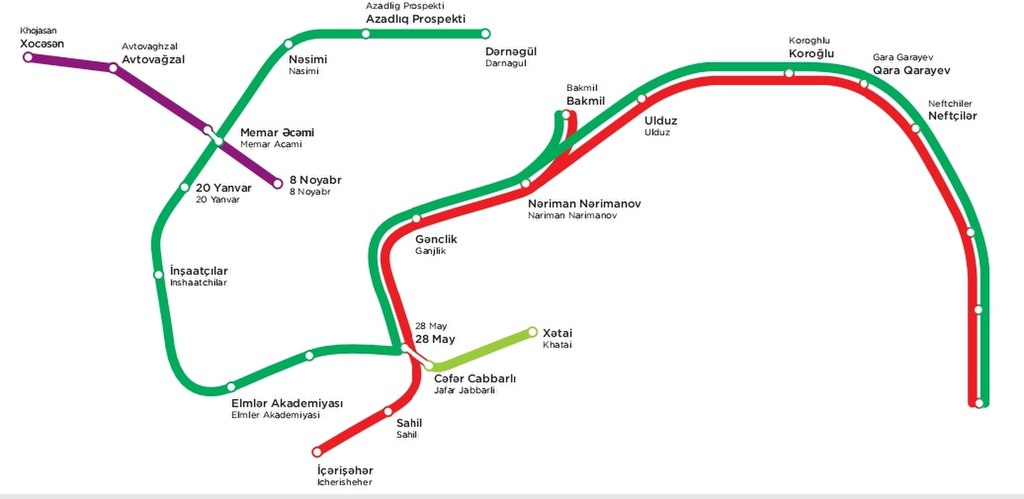
The Different Lines of the Baku Metro
The Baku Metro has a bit of a funky layout being that Baku didn’t have the typical planned Soviet city layout. As such there are currently four lines to the Baku Metro- the Red Line, the Green Line, the Purple Line, and the Disconnected Green Line.
The Red and Green Lines both are the same from Hazi Aslanov Station to 28 May Station. At 28 May Station, the two lines diverge, with the Green Line heading toward Nizami Station and then onto Elmer Akademiyasi Station, Inshaatchilar Station, 20 Yanvar Station, Memar Ajami Station, Nasimi Station, Azadliq Prospekti Station, and finally terminating at Darnagul Station. The Red Line continues onto Sahil Station and terminates at Ischeri Sheher Station.
The Disconnected Green Line is connected to 28 May Station by an underground tunnel to Jafar Jabbarly Station and terminates at Shah Ismail Khatai Station.
Finally, the Purple Line interchanges at Memer Ajami Station on the Green Line and terminates on one side at 8 Noyabr Station and on the other side at Avtovagzal Station.
There are plans underway to extend the Baku Metro by several stations. The Red/Green Line by 13 more stations, the Red Line by 6 more stations, and the Purple Line by 9 more stations by 2030. There are also plans to add a yellow and a blue line to the Baku Metro in the future.
The Baku Metro Stations
Green/Red Line
Hazi Aslanov Station
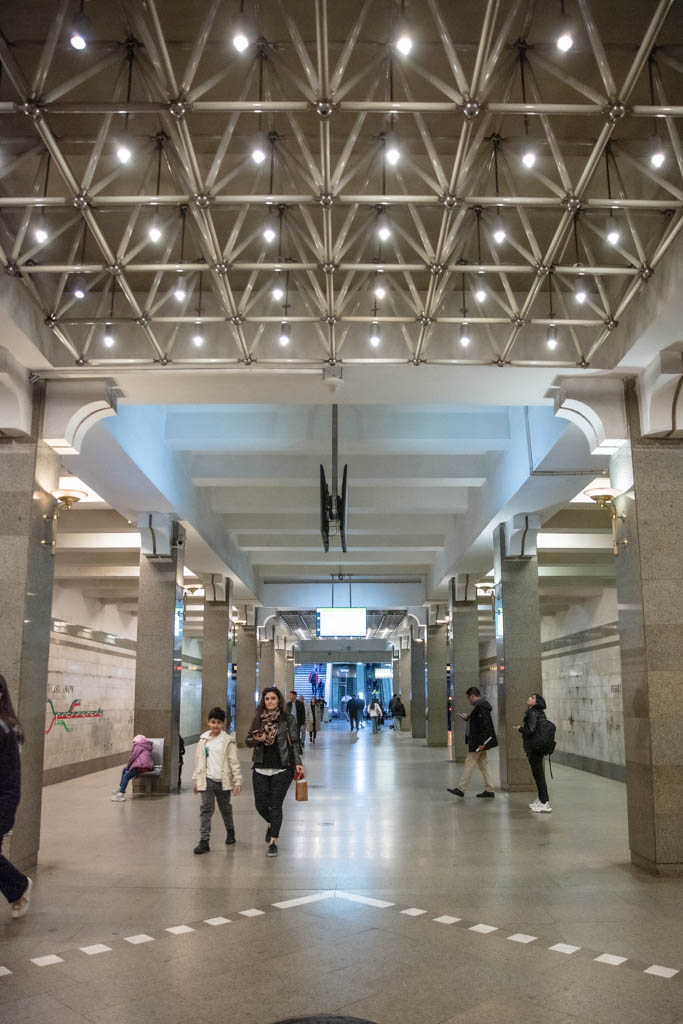
Named after Hazi Aslanov, a major-general of the Soviet Armored Troops who was twice awarded the Hero of the Soviet Union for his valor in battle during World War II. Hazi Aslanaov Station opened December 10, 2002. The station is located near the Hazi Aslanov Military Academy.
Hazi Aslanaov Station is located at the terminus of both the Red and Green Lines.
Ahmedli Station
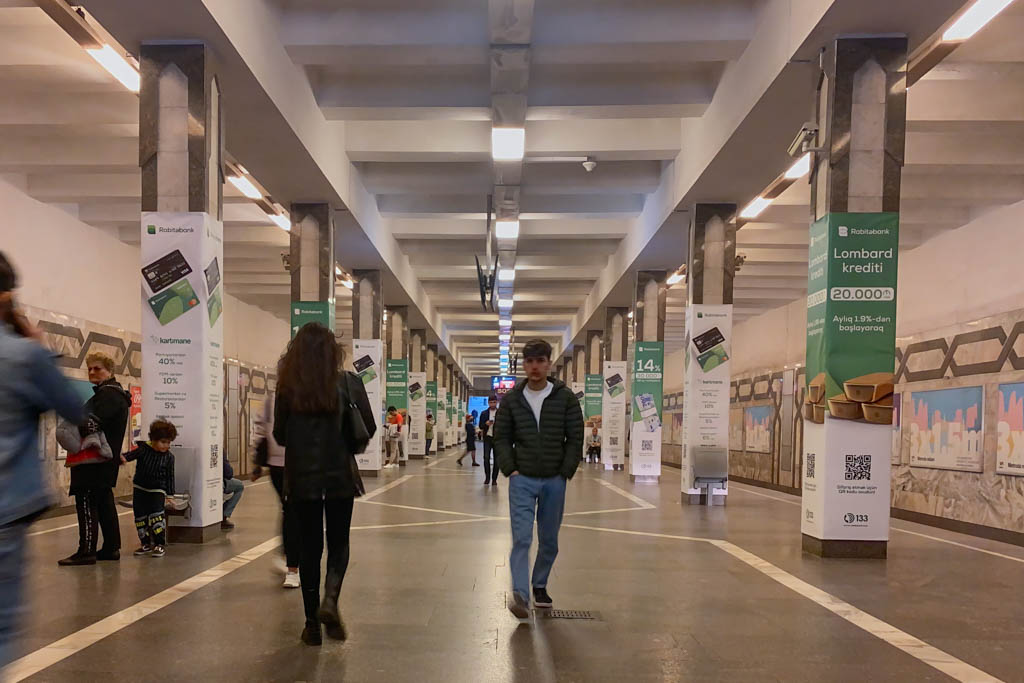
Ahmedli Station opened on April 28, 1989.
Xalglar Doslugu Station

Translating out to ‘friendship of the people’, Xalglar Doslugu Station opened on April 28, 1989.
Neftchilar Station

Neftchilar Station opened its doors on November 6, 1972. The station’s name translates out to ‘oil workers’ in the Azeri language and is therefore dedicated to the development of Azerbaijan’s petroleum industry.
Gara Garayev Station
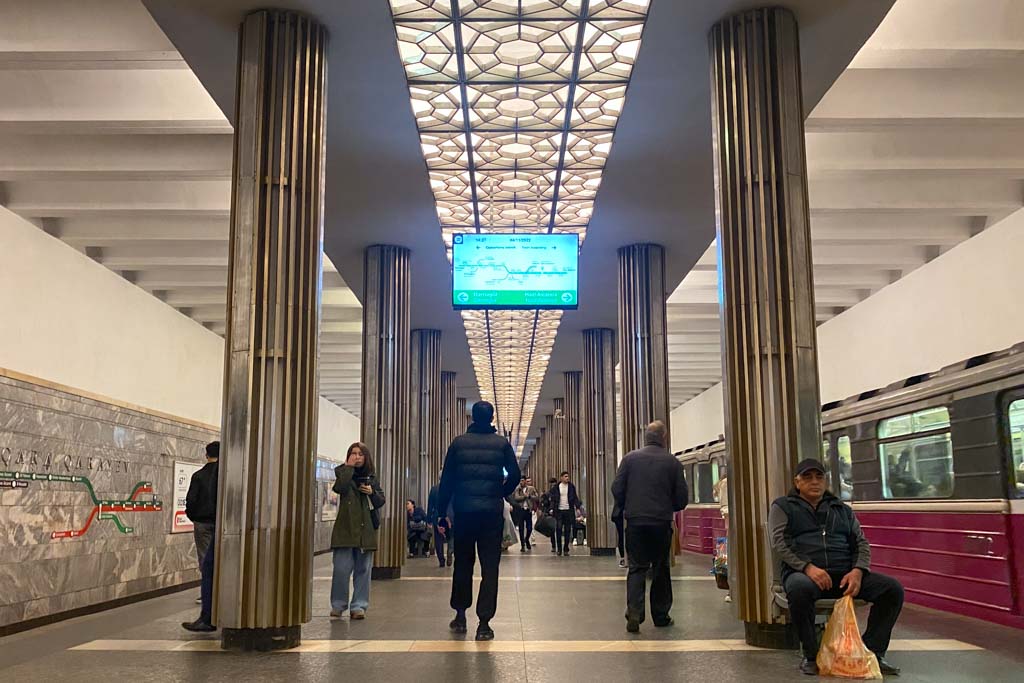
Opened in 1972 with the name of Avrora, holding the name through the Soviet era. The name was changed after independence to memorialize the Azerbaijani composer Gara Abulfaz Oghlu Garayev.
Koroglu Station
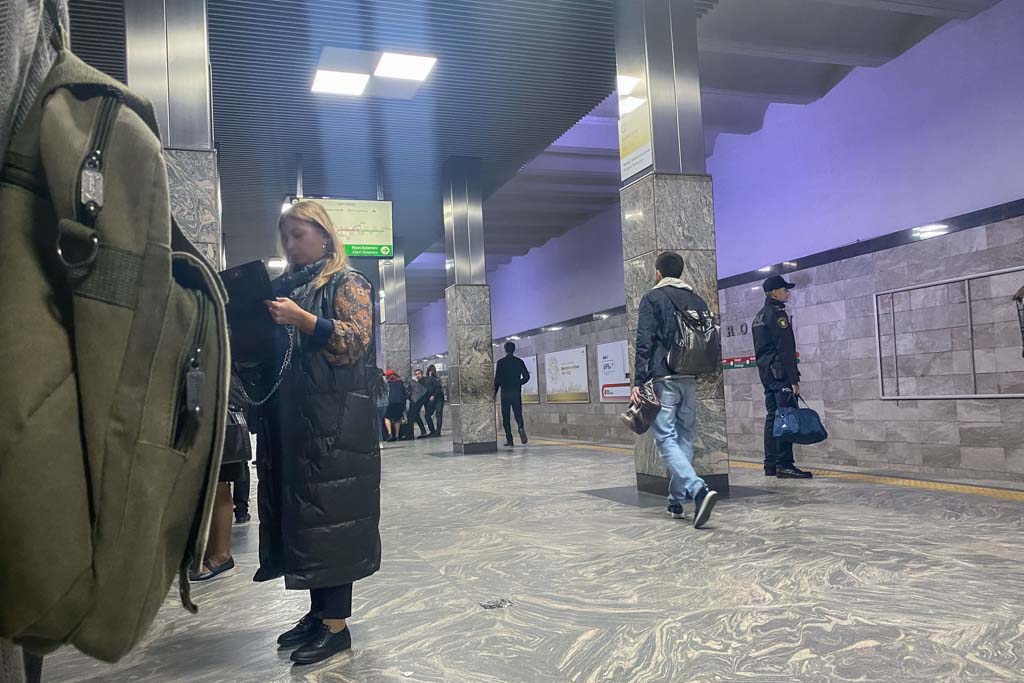
Opened on November 6, 1972, and originally named Meshedi Azizbeyov until 2011 when the station was renamed Koroglu.
Koroglu Station is named after the Azerbaijani epic hero of the same name, who is fabled for his bravery, leadership, and vengeance of wrongdoing.
Ulduz Station
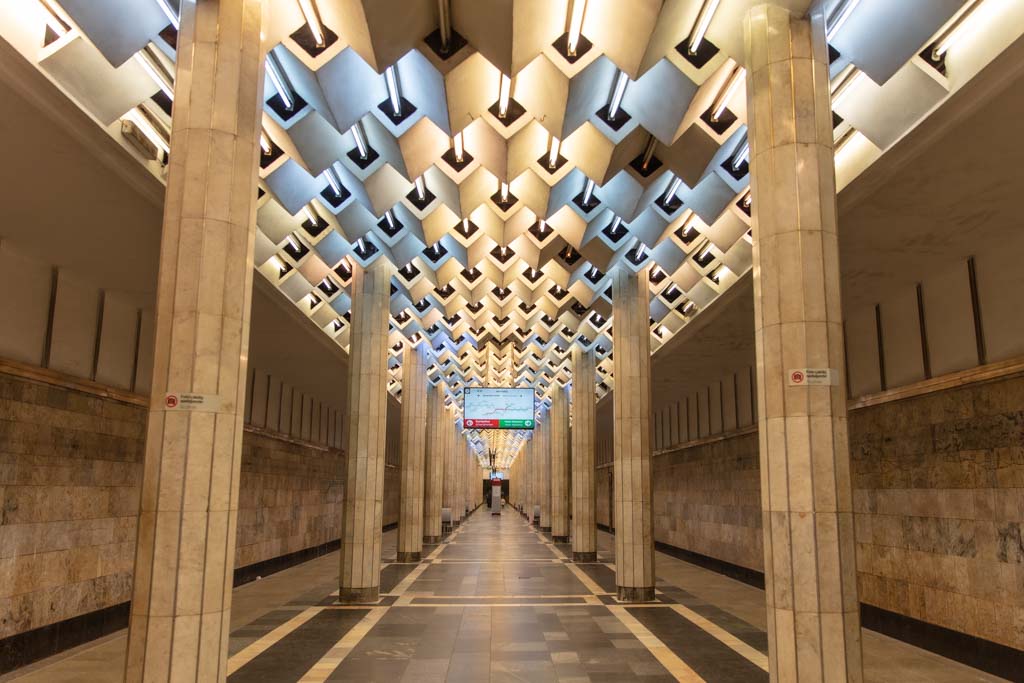
Ulduz Station opened on May 5, 1970, named after the Ulduz neighborhood in which it is located, whose name means ‘star’ in Azeri. Ulduz Station was one my favorites of the Baku Metro stations. The station’s ceiling lights somewhat reminded me of Kosmonavatlar Station of the Tashkent Metro.
Bakmil Station
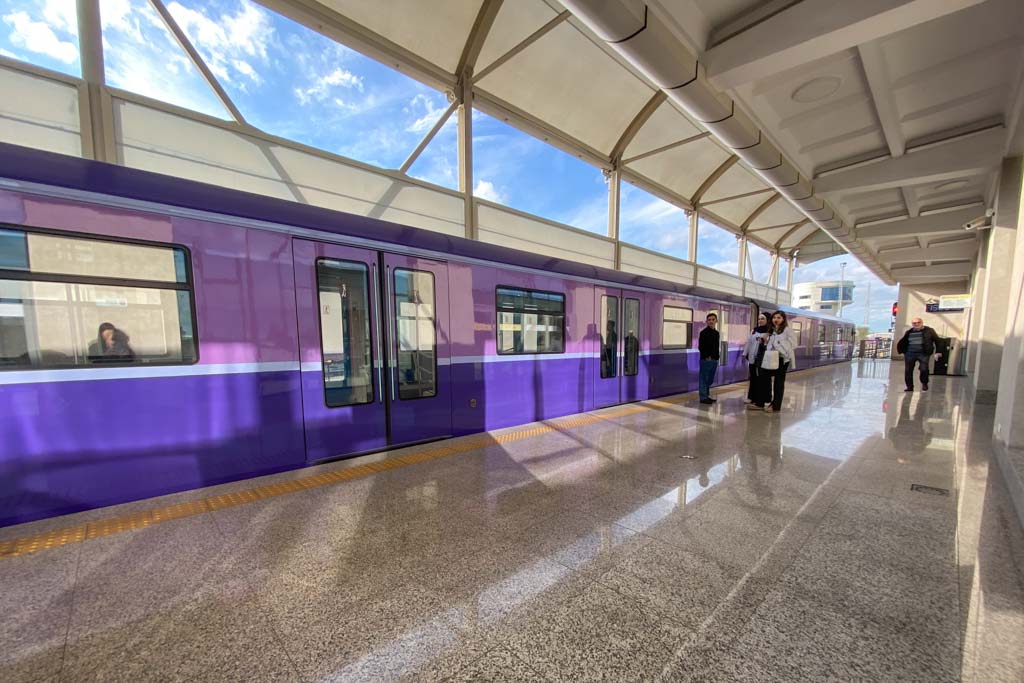
Bakmil is located on a branch off of Nariman Narimanov Station. The station originally opened on March 28, 1979, under the name of Elektrozavod, which it held until 1993 when the station name was officially changed to Bakmil Station.
Bakmil Station underwent extensive refurbishing in 2018-2019 and is the only above-ground station of the Baku Metro.
Nariman Narimanov Station
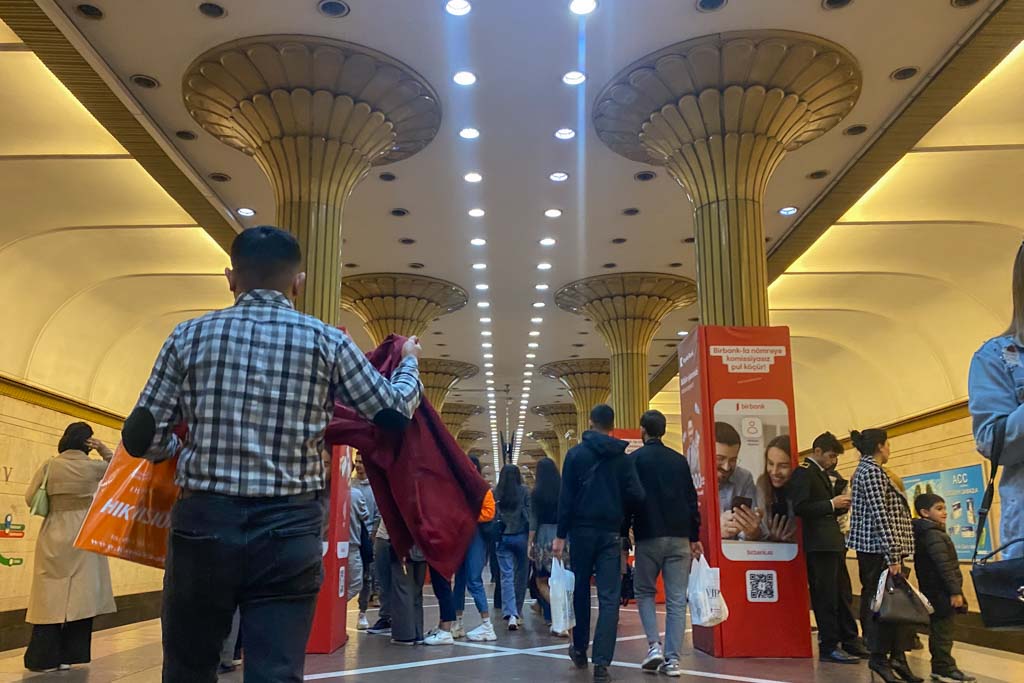
Opened on November 6, 1967, and was named after Nariman Narimanov, an Azerbaijani Bolshevik revolutionary, writer, and politician.
An electrical malfunction between Nariman Narimanov and Ulduz Station caused the 1995 Baku Metro Fire that killed 289 people.
Ganjlik Station

Named after the Ganjlik neighborhood in which it is located, Ganjlik Station opened its doors on November 6, 1967.
28 May Station
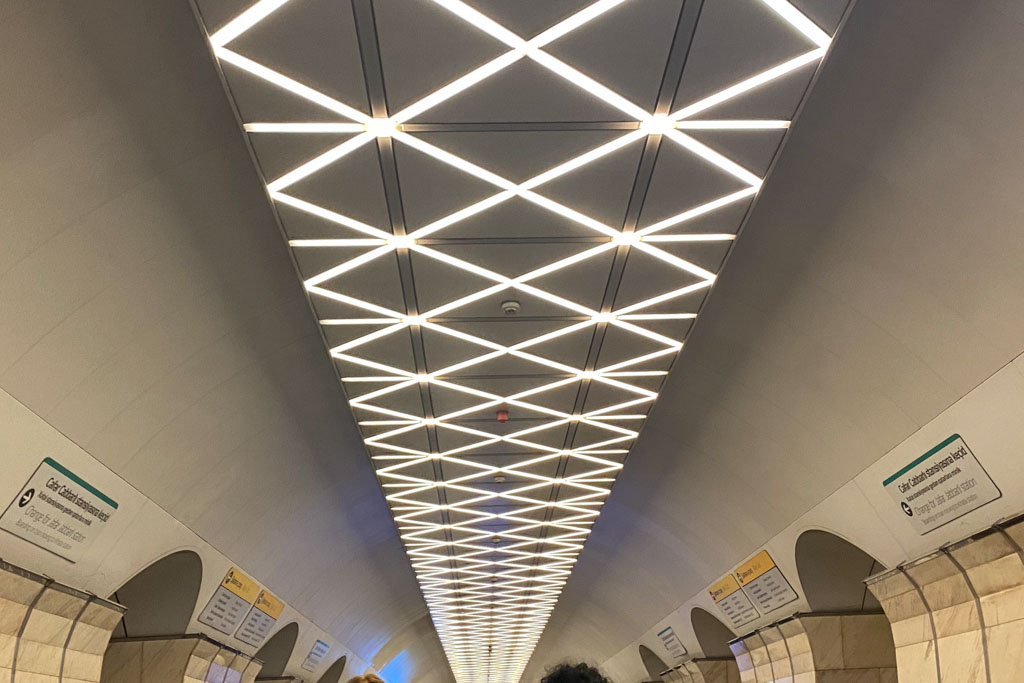
Originally named 28 April, the 28 May Station opened on November 6, 1967.
The 28th of May is a significant holiday in Azerbaijan known as Independence Day post-2021, but was called Republic Day previously and has been celebrated since 1990. The station honors the date in 1918 when the Azerbaijan Democratic Republic was founded following the declaration of Azeribaijan’s independence from the Russian Empire.
28 May Station is connected by an underground tunnel to the “Disconnected Green Line” station of Jafar Jabbarly and by a pedestrian tunnel to the Baku Central Railway Station. As such, 28 May Station serves as a transport hub in Baku and is always one of the busiest stations of the Baku Metro system. 28 May Station is also where the Green and Red Lines diverge.
Green Line
Nizami Station
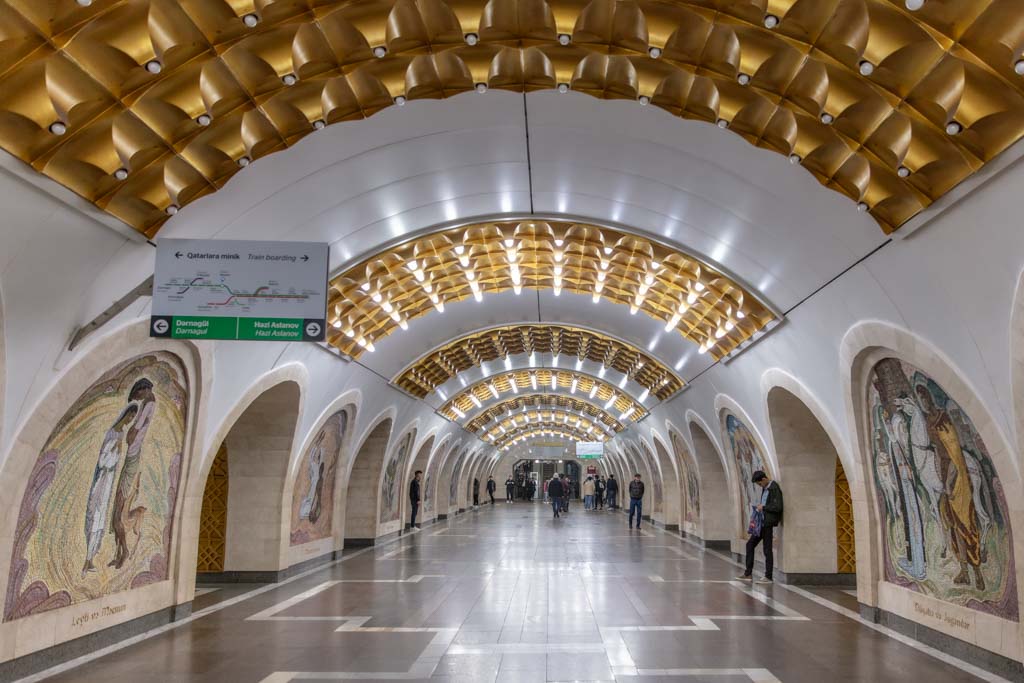
Named after Nizami Ganjavi who is largely considered the greatest romantic epic poet in Persian literature. Nizami Station opened its doors on December 31, 1976.
Nizami Station is named after the 12th-century Persian poet, Nizami Ganjavi, who is largely considered the greatest romantic epic poet in Persian literature. Nizami was born during the Seljuk Empire in the modern-day Azeri city of Ganja.
Nizami was another of my favorite stations with its opulent golden ceiling tiles and mosaics depicting Nizami Ganjavi’s romantic epics.
Elmler Akademiyasi Station

Elmler Akademiyasi Station is named after the nearby Azerbaijan National Academy of Sciences and opened on December 31, 1985. The academy conducts most of Azerbaijan’s research in the sciences.
Inshaatchilar Station

Inshaatchilar Station was opened on December 31, 1985.
20 Yanvar Station
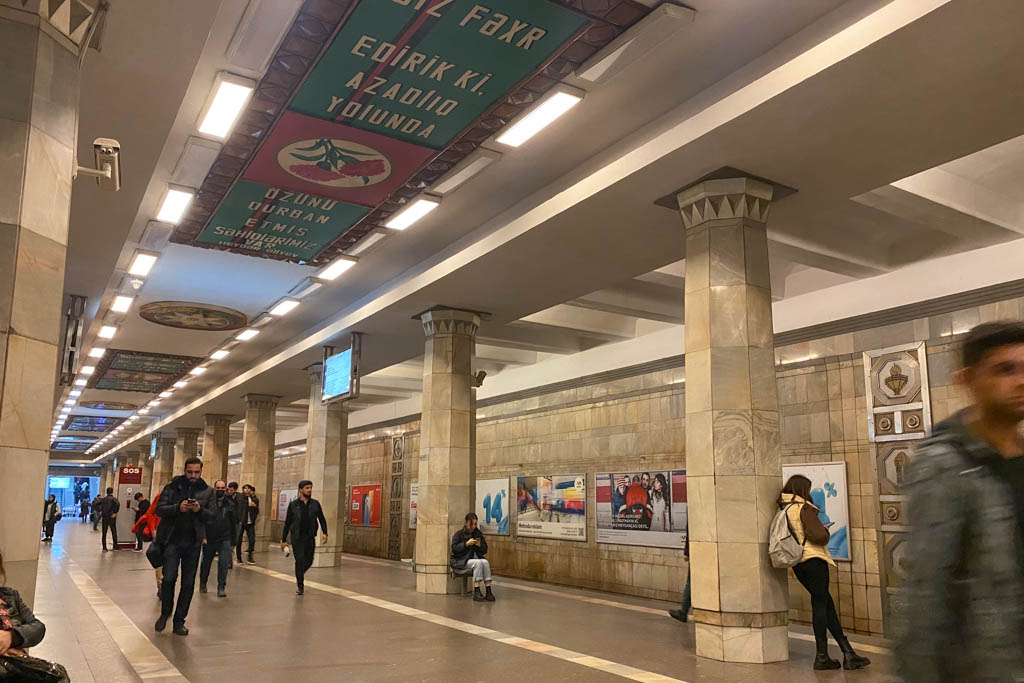
20 Yanvar Station opened on December 31, 1985, under the name XI Qizil Ordu Meydani which translates out to the 11th Red Army Square.
The 11th Red Army was formed by the Bolsheviks in 1918, from the already existing Red Northern Caucasus Army. From 1918-1921, the 11th Red Army assisted with the Sovietization of the Caucasian states of Armenia, Azerbaijan, and Georgia.
The station was eventually renamed 20 Yanvar Station (20 January Station in English) to commemorate Black January, a violent attack on the civilian population of Baku on January 19 and 20, 1990, by Soviet forces during the dissolution of the Soviet Union.
Memar Ajami Station
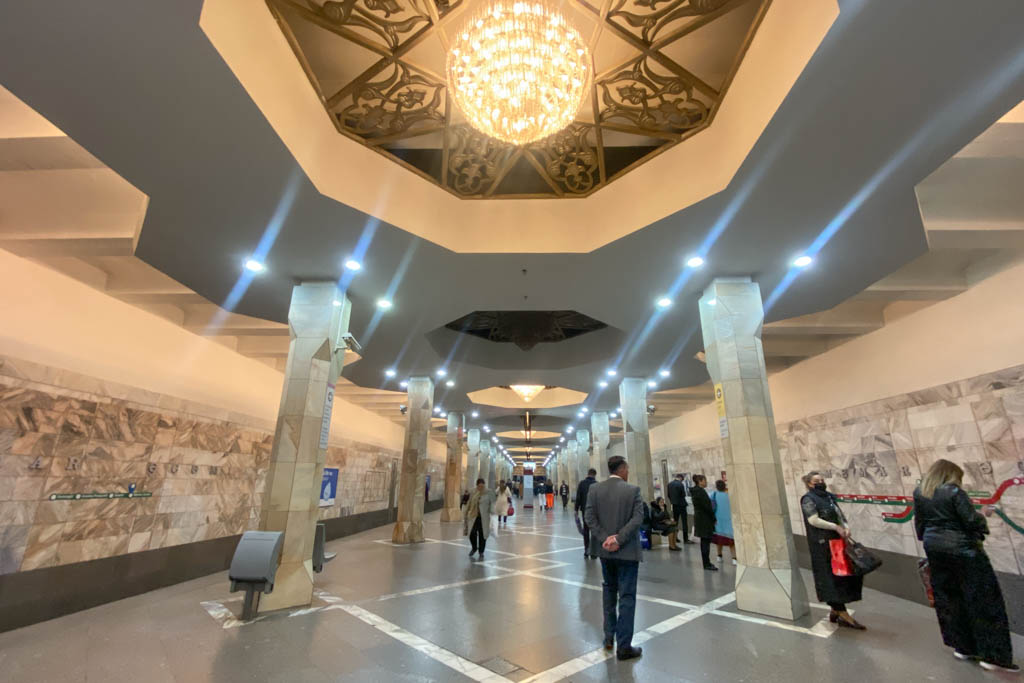
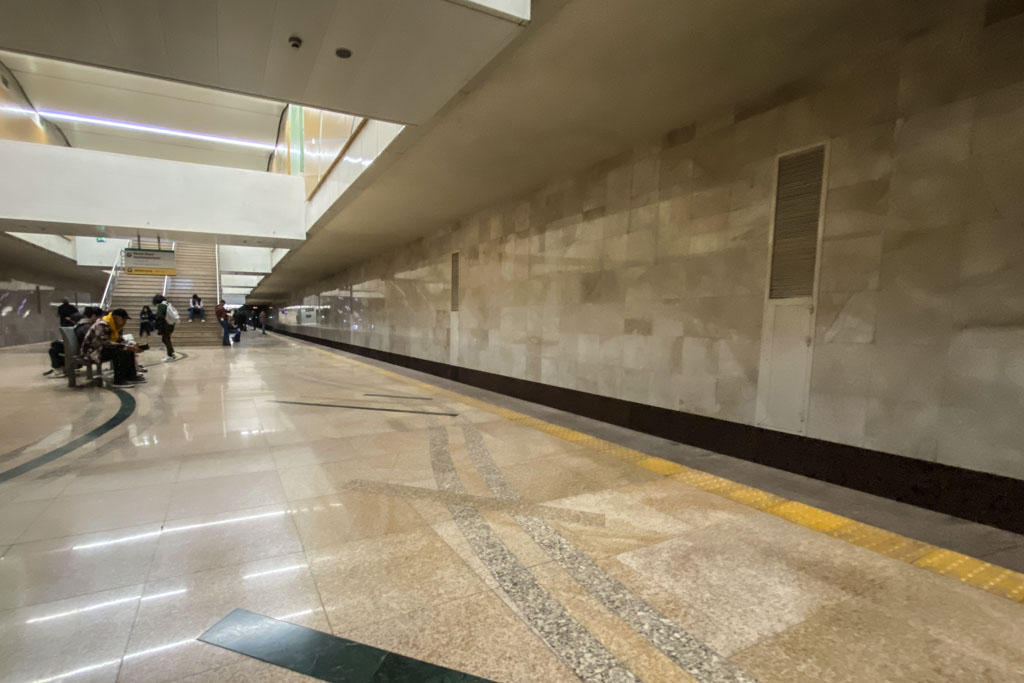
Memar Ajami Station opened on December 31, 1985, under the name Mikrorayon Station. It was later named after Ajami ibn Abubakr Nakhchivani, a 12th-century architect who significantly influenced the architecture of Nakhchivan. Memar Ajami went on to found the Nakhchivan School of Architecture and is known for his design of the Juma Mosque of Nakhchivan, the Momine Khatun Mausoleum, and the Yusif ibn Kuseyir Mausoleum.
On 19 April 2016, Memar Ajami Station became a transfer station, connecting the Green Line to the Purple Line by an underground tunnel.
Nasimi Station
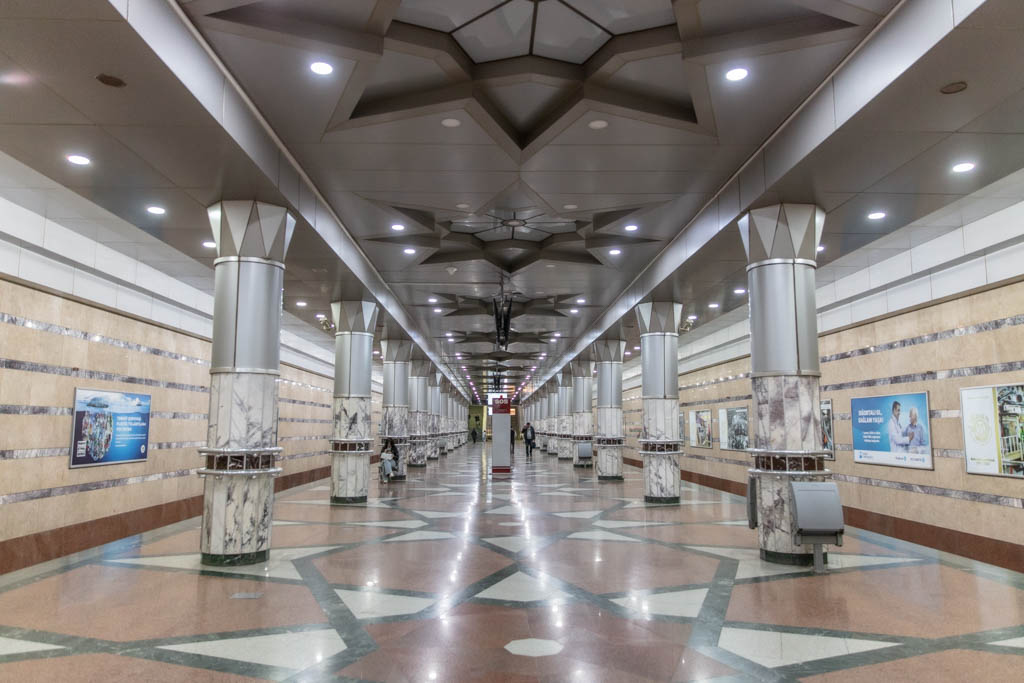
Nasimi Station is one of the newer additions to the Baku Metro, named after Imadaddin Nasimi, a 14th-century Azerbaijani Hurufi poet. Nasimi Station opened on October 9, 2008.
Imadaddin Nasimi is famous for his contributions to the development of Azerbaijani poetry and mysticism. He also wrote several pieces in Persian, Arabic, and Turkish. Many legends and unknowns surround Nasimi’s life including his birthplace being a place called Nasimi that is disputed to have existed between Aleppo, Syria, and Baghdad, Iraq, as well as the cause of his death which is widely believed to have been by having been skinned to death in Aleppo for blasphemy.
Nasimi Station is another stand-out station on the Baku Metro with its star designs on the floor and ceilings.
Azadliq Prospekti Station

Another new addition to the Baku Metro, Azadliq Prospekti Station opened on December 30, 2009.
The station is named after Azadliq Prospekti, which is a major thoroughfare of Baku that translates to ‘Freedom Avenue’.
Darnagul Station

Darnagul Station is the newest station on the Baku Metro’s Green Line, opening on June 29, 2011. The station is a pretty substantial transport hub as right outside Darnagul Station is the Darnagul Bus Station which serves many lines throughout Baku and its surroundings, including those looking to visit the flaming mountains of Yanar Dag by bus.
Darnagul Station is located at the terminus of the Green Line.
Red Line
Sahil Station
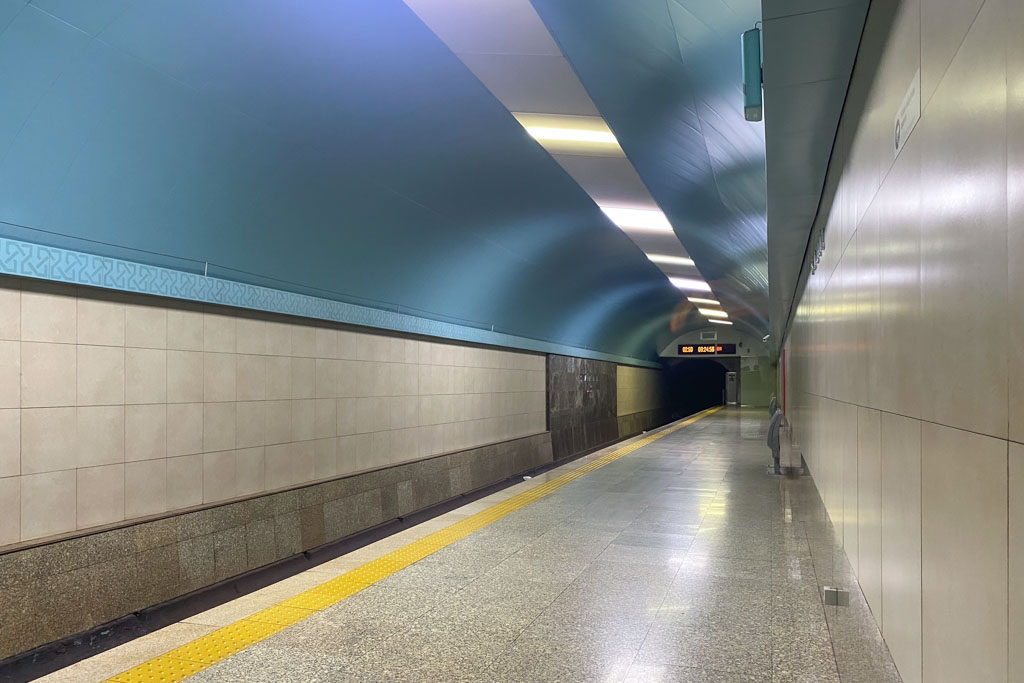
Meaning ‘coast’ in Azeri, Sahil Station sits near the shores of the Caspian Sea. Sahil Station opened on November 6, 1967.
Icheri Sheher Station
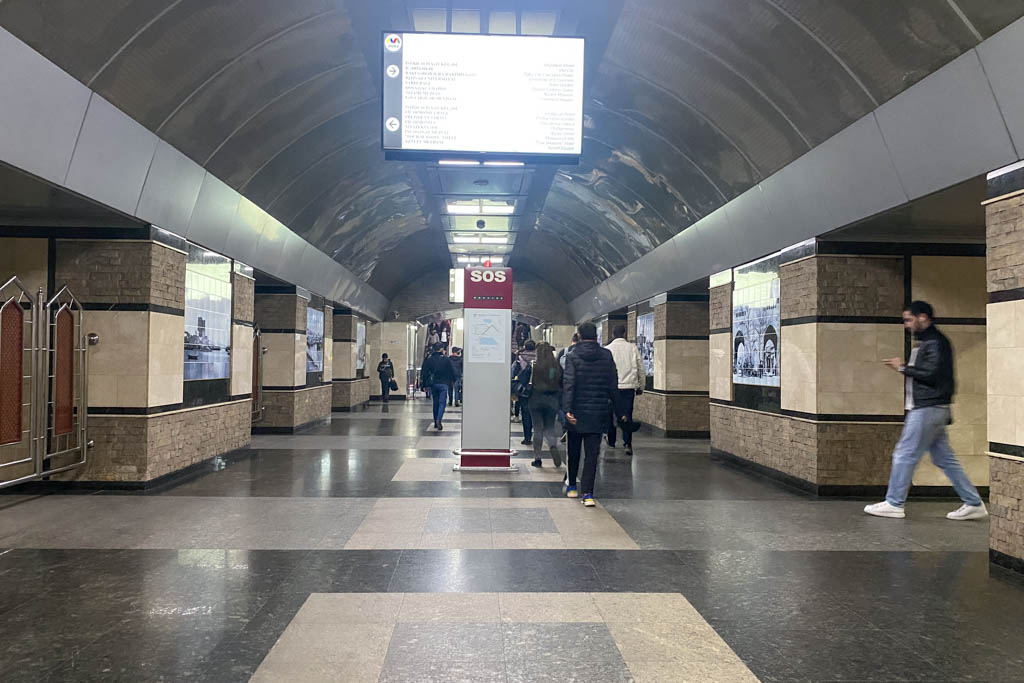
Baki Soveti Station opened on November 6, 1967, and remained under that name until 2007 when the Cabinet of Ministers of Azerbaijan Republic as part of a resolution renamed it to Icheri Sheher Station. In 2008 Icheri Sheher Station underwent extensive renovations. Icheri Sheher Station sits at the terminus of the Red Line.
The name Icheri Sheher translates to old or inner city, which the station gained its name from as it sits just outside the walls of the Old City of Baku. One feature of Icheri Sheher Station is the fragment of the original old city walls that are displayed within the station.
There is a single exit from Icheri Sheher Station that brings you onto Istiglaliyyat Street where you can easily access Baku’s Old City. The majority of the attractions of Baku are within or nearby the Icheri Sheher.
Disconnected Green Line
Jafar Jabbarly Station
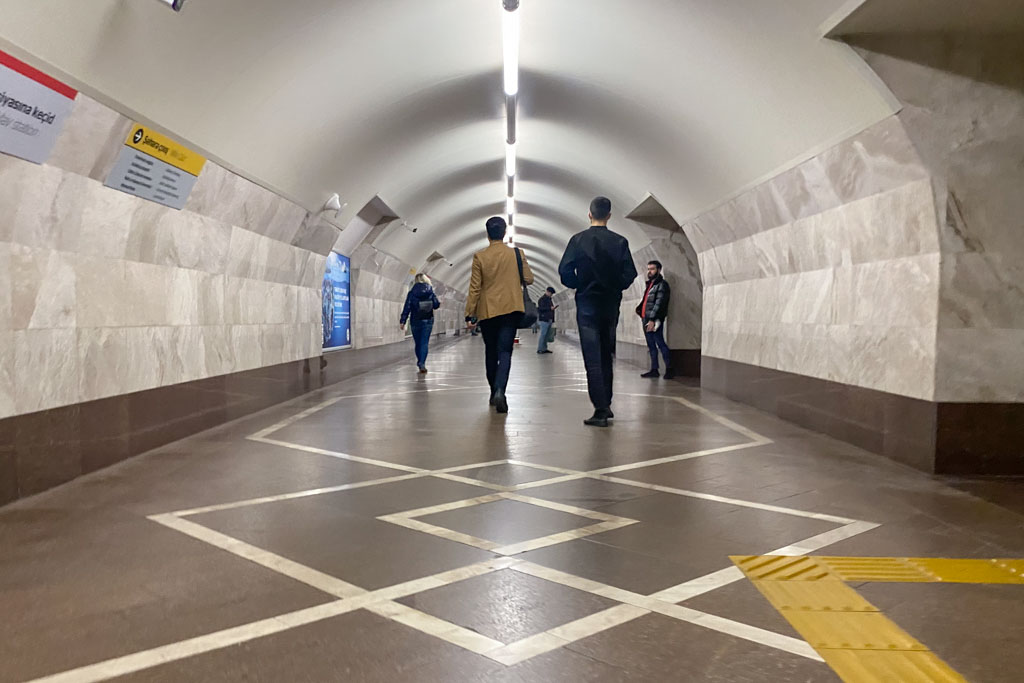
Jafar Jabbarly Station was named after Azerbaijani poet, screenwriter, playwright, and director, Jafar Jabbarly, who lived from 1899 to 1934. Jafar Jabbarly is widely considered Azerbaijan’s founder of screenwriting, his work, heavily influenced by 1920s communist glory.
Jafar Jabbarly Station opened on October 27, 1993, and lies at the terminus of the Disconnected (or separated) Green Line.
Shah Ismail Khatai Station
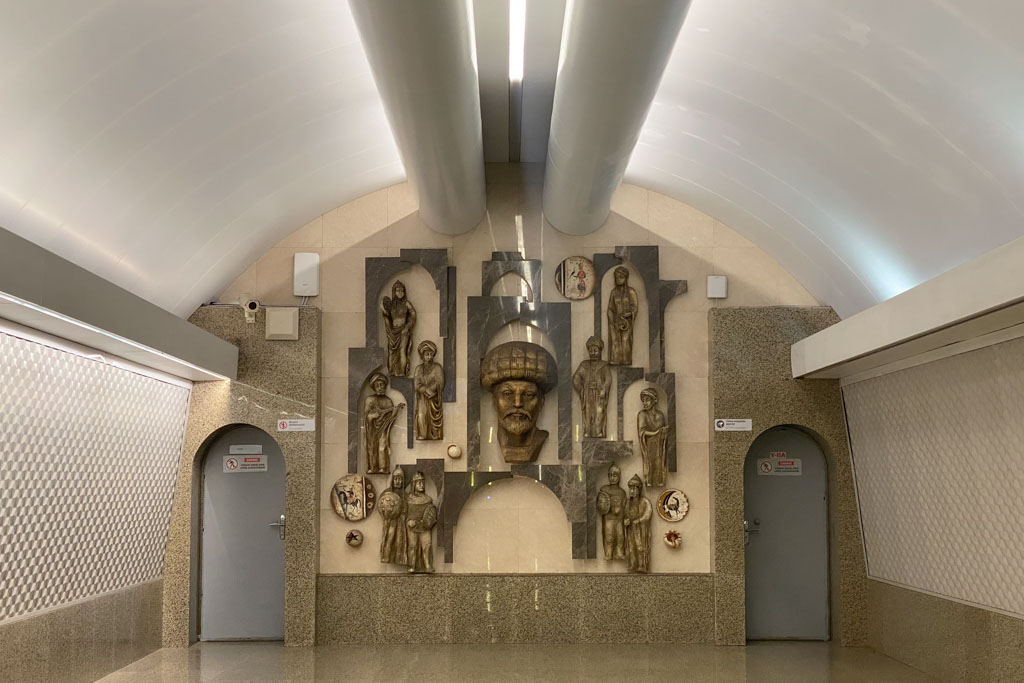
Originally opened under the name of Shaumyan Station on February 22, 1968, this station would see its name changed to Shah Ismail Khatai Station. Its original moniker named after was Stepan Georgevich Shaumyan, a Bolshevik revolutionary originally hailing from Armenia, who because of his involvement in the Russian Revolution of the Caucasus earned the nickname of the ‘Caucasian Lenin’.
After Azabaijan’s independence, the station’s name was changed to Shah Ismail Khatai Station to honor Shah Ismail I Khatai, the founder of the Safavid Dynasty.
Purple Line
8 Noyabr Station

Opened more recently, on May 29, 2021, 8 Noyabr Station was named to commemorate Azerbaijan’s Victory Day in honor of the Second Karabakh War* that took place in 2020 (though the suffering from this war is still very much ongoing).
*In Armenia the conflict is called the Second Artsakh War.
Avtovagzal Station
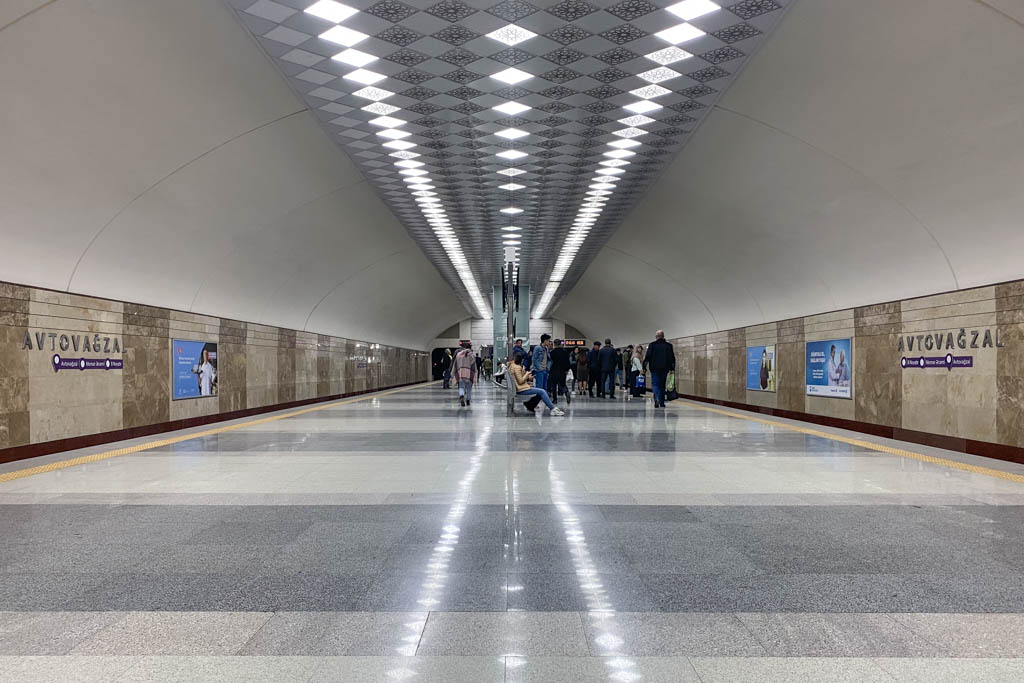
Avtovagzal Station opened on April 19, 2016, a welcomed addition that connected the Baku Metro system with Baku’s international bus station.
Connecting the Baku International Bus Terminal with the Baku Metro system. Avtovagzal is the Azeri word (as well as Russian: автовокзал) for bus station, a fitting name considering the purpose of the station.
Have any questions about the Baku Metro?
Ask in the comments sections below.
